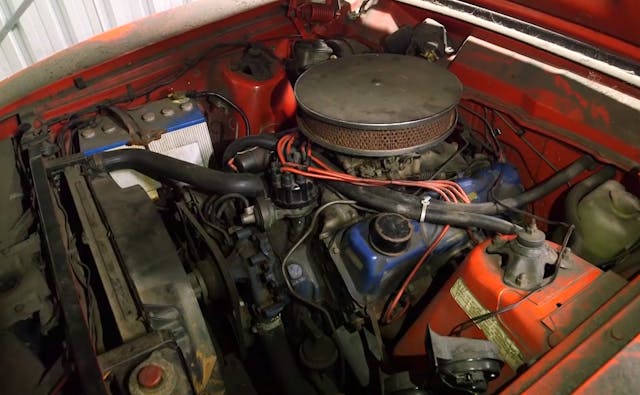Barn-find Falcon is a GT HO Phase-IV clone, but it’s a reminder of Australia’s “Supercar Scare”
Part of what makes a “barn find” so alluring is the mystery of its history, which is unraveled only by keen eyes and wealth of persistence, as Glenn Everitt, host of Master of Machines, can attest to. This pepper red 1972 Ford Falcon GT has been buried away after being treated as little more than a toy by its current owner, who parked it after the registration expired in 1987.
As the dust is swept back, certain features stand out, like the hopped-up 351 Cleveland engine, four-speed, and flared fenders. Its VIN reveals that it is a true Falcon GT, but the hosts briefly flirt with the idea that it’s the coveted HO Phase-IV, of which only four were built before the model was banned by officials. To understand the trepidation about giving this Falcon that honorable distinction, it’s important to step back to June 1972 and a news article about Australia’s hottest new “supercars” from Holden, Ford, and Chrysler’s homologation departments.
Like our Trans-Am specials, Australia grew to love the trickle-down of road racing packages for the Hardie-Ferodo 500—the predecessor to today’s Bathurst 1000—for its big-power performance and stout handling. But as that performance threshold began to reach beyond the clouds, officials like NSW transport minister Milton Morris began to decry these weaponized automobiles.
“I don’t mind expert racing drivers handling such machines on enclosed racing circuits,” Morris told the Sun-Herald‘s Evan Green. “But the thought that ordinary motorists of varying degrees of skill will be able to purchase these bullets on wheels and drive them on public roads is alarming.”
Mr. Morris and other officials were hung up on the promise of 160-mph top speeds, notable for a country whose outback regions had roads without speed limits, leading officials to become concerned about a high-speed wild west situation on their roads. Within days of the article being publishing, Australian officials began systematically banning the V-8-powered supercars, which is where our story makes its way back to the present.

After going door to door in the original owners’ neighborhood, as if looking for a lost puppy, the hosts manage to track down the original owner, Pat, who explains how this mystery machine—known as “the Mothball” for its long-term abandonment—came to be.
“I went to try and order [a Phase-IV], and they told me they were unavailable,” Pat explains, mentioning that the supercar ban that had just gone into effect. “So I settled on an ordinary GT and had a couple modifications done through the factory.” Pat added the Shelby intake and Holley carb, although they closely mimic the kit that a Phase IV would’ve carried under the hood, but he was able to secure the widened sheet metal and a few other trick parts off the legendary hi-po package before it was scrubbed from the catalogs.
There’s a strange irony to the way in which this car survived so long. Its original owner sold it in order to pay for additional construction of his house. After it passed through the hands of an owner known as the “Stick Man” (named for his habitual speeding with the four-speed Ford), it barely survived its current owner, who neglected it in a field for a significant time until his father badgered him to store it in a better space. He only became truly enthralled by it after seeing the values of a similar Falcon at an auction.
It’s easy to see in Pat’s eyes that he misses his Falcon for reasons beyond a hefty check, and he’s keenly aware of how close the car came to rusting away forever.
We’re happy to see it was rescued just in time.



